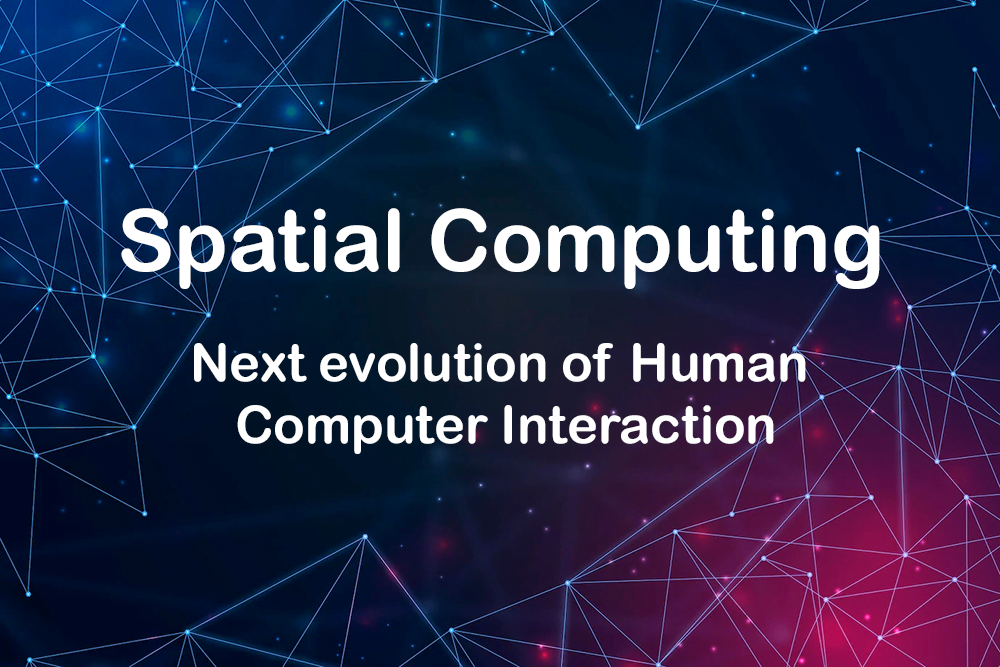Spatial computing is a term referring to the use of digital technology within a three-dimensional world. This involves the concept of Augmented Reality (AR) and Virtual Reality (VR). It’s also referred to as ‘spatial intelligence’; an indication that it goes further than looking at just one device.
Spatial computing is the next evolution in human-computer interaction. Using advancements in computer vision (CV), machine learning (ML), spatial tracking, and 3D user interfaces, spatial computing moves beyond two-dimensional screens and keyboards to let you interact with digital devices as if they were part of the physical world.
 The spatial computing digital delivery platform is a platform that allows developers to create AR, VR, and MR experiences that are easily accessible through phones, browsers, and headsets. With it, anyone can access and experience content on their chosen device with no need for specialized apps or coding skills.
The spatial computing digital delivery platform is a platform that allows developers to create AR, VR, and MR experiences that are easily accessible through phones, browsers, and headsets. With it, anyone can access and experience content on their chosen device with no need for specialized apps or coding skills.
With spatial computing, you are able to walk within the virtual world, interact with objects that only exist in it, and experience a completely different and immersive reality. Instead of being on the outside of your computer looking in, spatial computing allows you to be inside your computer, and move around as if you are in a digital world.
Examples of Spatial Computing Devices :
- VR Headsets: Virtual reality headsets allow users to experience being part of a virtual realm. Initially used for video gaming, they are now being used for a variety of purposes including medical training and simulations, and even for relaxation.
- AR Glasses: Augmented reality (AR) glasses have come a long way in the past few years, moving beyond just sci-fi myths to actual functioning devices. Today, this futuristic eyewear is not just a high-tech gadget but also offers numerous benefits. If you are considering investing in these smart eyeglasses, here is a look at some of their pros and cons that may help you make an informed buying decision.
- Hybrid Gear: Hybrid gear is emerging as the next frontier in showcasing immersive technologies. To see its potential, just look at FellReal’smulti-sensory mask. It uses the technology of VR, AR, and MR to create an immersive experience that fully integrates the user’s senses. Another example is Hexoskin, a smart clothing line that allows the wearer to use their clothes as input devices while tracking biometric data.
The future of spatial computing is one that acknowledges continuous evolution. Technology has always been in flux, and with disruption comes both excitement and apprehension. It’s good to be aware—and prepared—for what lies ahead.
